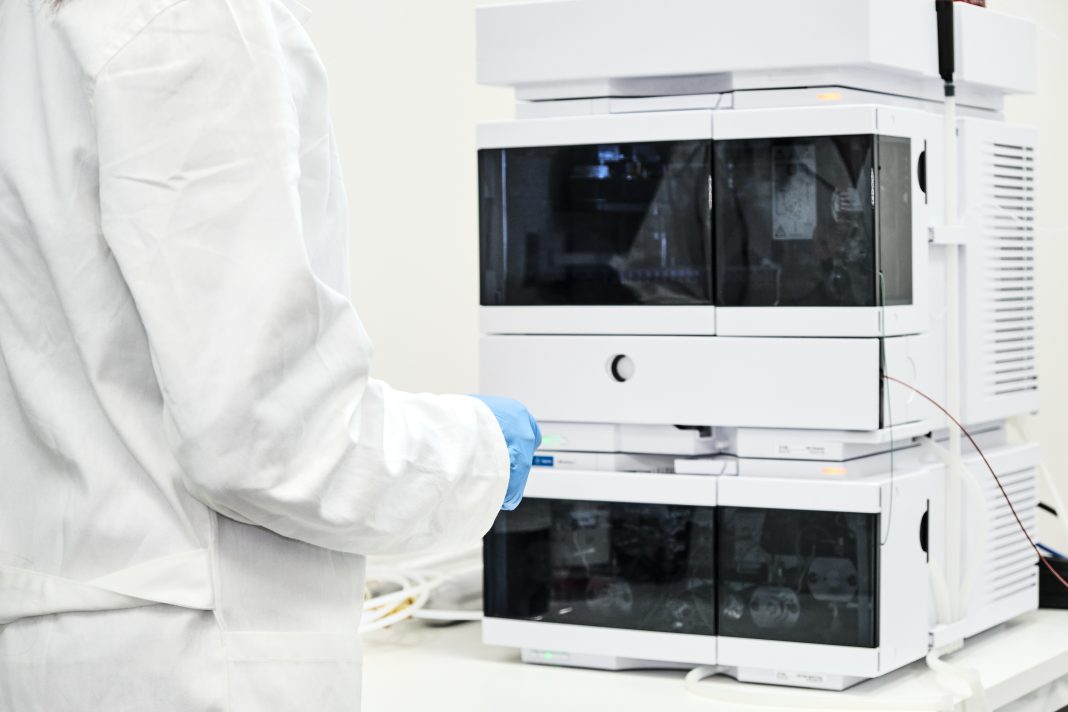High performance liquid chromatography (HPLC) was first described in a landmark paper by Csaba Horvath and Seymour Lipsky in 1966, followed by the 1967 debut of the Waters ALC-100. Over the next thirty-plus years HPLC evolved significantly but incrementally to meet the analytical needs of a relatively new science—therapeutic biotechnology.
The next big breakthrough came, also from Waters, with the 2004 introduction of 2004 UltraPerformance LC (UPLC), which was based upon sub 2-micron porous particles and three to four times the pressure of standard LC, and much smaller flow rates.
As noted by Michael McGinley, director for global applications at Phenomenex, HPLC had been migrating towards smaller particle sizes for some time. Some companies initially embraced the smaller particles and higher back-pressures while others fought it. But eventually all significant HPLC vendors adopted the new format. Some improvements that followed were based on the new format (e.g., “UHPLC,” as uPLC is a Waters trademark) while others, like medium-pressure systems, porous shell (and other stationary phase innovations), supercritical CO2 systems, etc., were viewed as alternatives to both conventional HPLC and various “UHPLC” architectures.
“Several companies were innovating in the early 2000s,” McGinley says. “Merck was leading in monoliths, Kirkland and Agilent had been investigating porous shell technology for years, and even Phenomenex had introduced sub-3u type stationary phases in the late 90s. We couldn’t play in the 400+ bar world at the time because we weren’t an instrument manufacturer.”
Platform choice
Platform choice comes down to the molecule under investigation, McGinley says. “For small molecules we are seeing reverse-phase UHPLC; for metabolites, particularly polar ones, you tend to see hydrophobic interaction (HILIC). Multiple separation modes are used for proteins: widepore RP-HPLC for intact proteins and standard RP-HPLC for peptide mapping. Ion exchange is often used for quantifying post-translational modifications, while HILIC is the choice for glycan analysis and size-exclusion chromatography for aggregate analysis. Reverse-phase LC/MS dominates for oligonucleotides, but you still see ion exchange for this application.”
Products used for characterization remain relevant at analytical scale, McGinley says, while.2.1 mm and 4.6 mm ID columns are still popular because they don’t require specialized instrumentation.
“Micro scale (0.15mm to 1mm ID) is seeing some traction for applications where sensitivity is a struggle, for example in metabolomics, lipidomics and quantitative proteomics. Nanoscale LC (<0.15mm ID) still sees a lot of use where sensitivity is most important and for qualitative work such as proteomics.”
Detection modes have also helped to shape HPLC’s evolution. Mass spectrometry has had the largest impact since it assumes a good deal of the separation and quantitation requirements. “Methods take less time because of this,” McGinley tells GEN. “One no longer needs to get baseline resolution of two closely eluting compounds as the MS can be used to get good gaussian peaks, even for compounds eluting at the same time. Also, column dimensions have continued to drift towards 2.1mm ID versus 4.6mm ID to exploit the LC/MS compatibility that 2.1mm ID provides.”
Improvements in HPLC are sure to continue, but perhaps not from the direction one would assume. “New HPLC systems seem to be more focused on regulatory compliance and fitting into a more automated laboratory environment, and less on specific performance improvements. Inert, metal-free systems seem to be a common feature in new LC systems, mostly due to the desire for better recovery and performance for ‘sticky’ biomolecules.”


